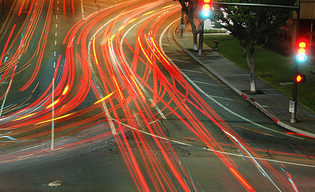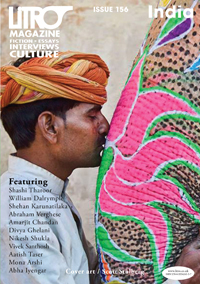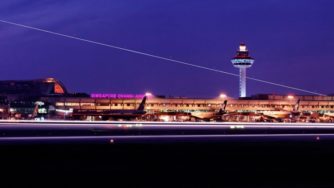You have no items in your cart. Want to get some nice things?
Go shopping My mother and father arrived in Addis Ababa a week apart. They were among four hundred other Indian teachers—most of them Christians from Kerala—who would spread out over Ethiopia and teach math, physics, biology or English in the newly built high schools in Ethiopia. Why were all these teachers recruited from one state in India? Emperor Haile Selassie of Ethiopia, shortly after his country was liberated from Mussolini’s hold, went on a state visit to India. He traveled to the south of India to see the churches of St. Thomas. He had seen in the early morning, as you can still see today, legions of schoolboys and schoolgirls in uniform making their way to classes. Kerala was then and still is the stat with the high- est literacy rate in India. is sight had impressed the emperor so much that he had decided to hire teachers from this Christian state to man the new schools he was starting across his country.
My mother and father arrived in Addis Ababa a week apart. They were among four hundred other Indian teachers—most of them Christians from Kerala—who would spread out over Ethiopia and teach math, physics, biology or English in the newly built high schools in Ethiopia. Why were all these teachers recruited from one state in India? Emperor Haile Selassie of Ethiopia, shortly after his country was liberated from Mussolini’s hold, went on a state visit to India. He traveled to the south of India to see the churches of St. Thomas. He had seen in the early morning, as you can still see today, legions of schoolboys and schoolgirls in uniform making their way to classes. Kerala was then and still is the stat with the high- est literacy rate in India. is sight had impressed the emperor so much that he had decided to hire teachers from this Christian state to man the new schools he was starting across his country.
On the matter of how my parents met, how they courted, I dare not ask my father. And my mother, though seemingly willing, parts with no significant details. My brothers and I always thought it had something to do with physics.
When my parents tell me the story of their arrival in Ethiopia—the tough times in India, the struggle to get a college education, the word of mouth from friends about jobs overseas, the letters of inquiry to “relatives” abroad, the establishment of a base, the accumulation of a nest egg, the consolidation of resources by marriage, the help and support extended to their younger cousins and more distant “relatives” who wrote asking for advice—I understand the migration of Indians to South Africa, Uganda, Kenya, Tanzania, Mozambique, Mauritius, Aden, Ethiopia. And the next wave on to Birmingham, Bradford, Bristol, London and Toronto. And to Flushing, Jersey City, Chicago, San Jose, Houston and even Johnson City, Tennessee.
In their herald migration, my parents individually and then together reenacted the peregrination of an entire race. Like ontogeny repeating phylogeny—the gills and one-chamber heart of a human fetus in the first trimester reenacting man’s evolution from amphibians—they presaged their own subsequent wanderings and those of their children.
***
During the hiatus in my medical education, while I worked as an orderly in America and before I went to India to finish medical school, I had seen the vantage of a hospital worker the signs of urban rot in Newark, Elizabeth, Jersey City, Trenton and New York. The (insured) middle class continued to flee farther out to the suburbs where chic, glass-fronted hospitals complete with birthing suites and nouvelle cuisine popped up on the freeway like Scandinavian furniture franchises.
Meanwhile, the once grand country hospitals were sliding inexorably, like the cities them- selves, into critical states. Understaffing, underfunding, the old stories. Their patients had become the uninsured and indigent whose problems resolved around drug addiction and trauma. In the emergency rooms of these fading institutions, bodies were pressed together like so many sheep. Old people languished on stretchers shunted into hallways and corridors while beleaguered nurses attempted some form of triage.
An inevitable accompaniment to this scene of a city hospital under siege was the sight of foreign physicians. The names of these doctors—names like Srivastava, Patel, Khan, Iqbal, Hussein, Venkateswara, Menon—bore no resemblance to those of the patients being served or the physicians who supervised them.
City and county hospitals were the traditional postgraduate training grounds for foreign medical graduates: hospitals like Cook County Hospital in Chicago, Nassau County and Kings County in New York and dozens of others across the country counted on foreign interns and residents for manpower, particularly in internal medicine.
By the time I completed medical school in India and returned stateside, a few of my seniors from my medical school in India had begun internships at county hospitals across America. rough them and through their friends and their friends’ friends, an employment network extended across the country. With a few phone calls, I could establish for any city which hospital to apply to, which hospital to no bother with because they never too foreign graduates, and which hospital took foreign graduates for the first year, used them for scut work, but never prompted them to the second year—the infamous “pyramid” residencies. And the network invariably provided me with the name of someone to stay with.
At hospitals that took foreign physicians the work was grueling, the conditions appalling— but only by American standards—and the supervision and teaching often minimal because of the sheer volume of work. This was particularly true in hospitals that were university- affiliated. The cut work—wheeling the patient down to x-ray, drawing blood, starting intravenous drips, putting in Foley catheters, doing ECGs—was endless and the every-other-night-call schedule was brutal.
As I crisscrossed the country, in search of a residency slot, by way of Greyhound, sleeping on friends’ couches (or on their beds if they were on call), I was amazed by the number and variety of foreign interns and residents I met in these hospitals. I overheard snatches of Urdu, Tagalog, Hindi, Spanish, Portuguese, Farsi and Arabic. Some hospitals were largely Indian in flavour, others largely Filipino. Sill others were predominantly Latin or East European.
In the cafeteria of a hospital in a less-desirable section of Los Angeles, a hospital at which I was interviewing, I took my tray over to a table where an Indian physician sat. She had the handsome Aryan features of a Parsi or a Kashmiri. I thought she might be from Bombay or Chandigarh or Delhi—the other end of the country from where my parents were born. But when she spoke I was bowled over: from her lips emerged the purest Birmingham cockney! (I recognized this accent easily: as a ten-year-old I had spent a year in Birmingham while my father was there on sabbatical.)
She told me her family had fled Uganda and settled in Britain when she was a young girl. She had never seen India, neither had her parents. Her family had been in Uganda for two generations. She had gone to medical school in Leeds and then come to the States. When I told her I was born in Ethiopia, she tried her Swahili on me and I my Amharic on her. Neither of us got very far with that and so we retreated to English.
The England she reminisced about was vastly different from my memory of it. The Asians, she said, now had pubs of their own in Asia strongholds like Wembley and Southall. These hybrid establishments served tandoori chicken, pakodas and samoosas to be washed down with pints of the finest British bitter. And the music and dance were likely to be “bhangara-disco”— an electronic rendering of Punjabi and Gujarati folk music. The youth, most of whom, like her, had never been to India, had taken up the music of Lata Mangeshkar, Mukesh or Mohammed Ra —old playback singers for Hindi movies.
Before she left to return to the wards, she paged a fellow intern, a Zachariah Mathen. From his name I knew he was a Christian-Indian like me. Zachariah took me around the hospital and as a matter of course
offered me his apartment and car keys. “Make my home your home! Explore the City of Angels,” he said.
***
Some hospitals, like Coney Island Hospital in New York, sent contracts to graduating medical students in India who had been recommended by their seniors. Come July, the seniors were dispatched to Kennedy to pick up the new blood fresh o Air-India, bring them to Coney Island and orient them. e cultural adjustment was simple: the reassuring scents of green chili and frying papads wafted won the corridor of the house-sta quarters. Indian sari stores, Indian restaurants and Indian grocery stores abounded—some even delivered. The latest Hindi blockbuster starring Amitabh or Dimple could be rented in Queens on bootleg video within days of its debut in Delhi or Poona. And the faces of the physicians of the wards were those that one might have seen on the platform of Victoria Station, Bombay.
The few American interns and residents I saw in the various hospitals I visited were graduates of the “offshore” or Caribbean schools in places like Antigua, St. Lucia, Montserrat or Grenada. These schools existed solely for Americans who could not make it into U.S. medical schools.
***
The foreign doctors—with some glaring exceptions—were well received. ey developed reputations as sound physicians. Though they were friendly, the majority chose not to integrate with the community except at a superficial level. They retained many of their foreign customs, the women wore saris, they were very protective of their children, and most of their socialization was with each other. In the corner of the kitchen or in a separate puja room would be a collection of Hindu icons: invariable Lakshmi (the goddess of wealth) and Ganesha. Also Muruga, Venkateswara, Sai Baba, Durga, according to taste. Once a day the incense and the oil lamp would be lit, the silver bell rung and burning camphor waved around the idols. And at least once a year the family would travel to the Hindu temple in Nashville to do a more elaborate puja or mahabhishekam.
The effeect of having so many foreign doctors in one area was at times comical. I had once tried to reach Dr. Patel, a cardiologist, to see a tough old lady in the ER whose heart failure was not yielding to my diuretics and cardiotonics. I called his house and his wife told me he was at “Urology Patel’s” house, and when I called there I learned he and “Pulmonary Patel” had gone to “Gastroenterology Patel’s” house. Gastroenterology Patel’s teenage daughter, a first-generation Indian-American, told me in a perfect Appalachian accent that she “reckoned they’re over at the Mehtas’ playing rummy, “ which they were.
Rajani and I, perhaps because we were of a younger generation, traveled easily between these two worlds: the parochial world of Indians in America, and the secular world of east Tennessee. For the Indian parties, Rajani wore a sari and we completely immersed ourselves in a familiar and affectionate culture in which we had our definite place as the junior most couple; but at night we could don jeans and boots and go line dancing at the Sea Horse on West Walnut or listen to blues at the Down Home.




